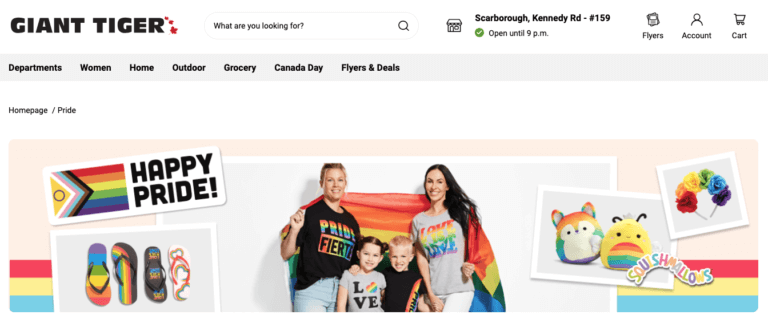In this divided era with the growing influence of social media, retail leaders and strategists suffer a major headache: how can they sail through the stormy seas of competing ideologies while keeping customers happy? Faced with political and ESG (Environmental, Social, and Governance) polarization, businesses have to walk a tightrope between sticking to brand values and appealing to a diverse customer base. This blog will explore strategies for retailers to navigate these complexities successfully.
POLITICAL POLARIZATION & RETAILERS
Political polarization has never been so noticeable, creating a delicate dilemma for all retailers. You may need to decide whether to be outspoken and take a stand on sociopolitical issues, or remain silent to avoid distancing some of your customer segments. Interestingly, customers nowadays may not be satisfied with either approach.
In the US, recent controversies involving Bud Light and Target show that corporate support for certain communities in public may face customer backlash. Consumers often want companies to mirror their values, making it challenging for retailers to strike a balance.

Image Source: Shutterstock
ESG POLARIZATION & INVESTORS
Businesses have recently become more entangled in the ESG controversies, with growing repercussions against socially conscious investing. The philosophy of ESG, which advocates for companies to consider the impact on the environment and society apart from making profits, has come under scrutiny by certain investors, particularly in the US. They fear it may undermine shareholder benefits and clash with the principles of a free market economy. This backlash against ESG reflects the ongoing cultural divide in the corporate role of addressing societal threats.
CONSUMPTION & INVESTMENT AS “VOTES”
Polarization extends to consumption and investment, where customers and investors may express their “votes” based on political ideologies and cultural values. The rise of “consumer activism” and “shareholder activism” becomes risky for retailers on the way to achieving business objectives. “Boycotts” and “buycotts” are two forms of consumer activism, with Ben & Jerry’s in 2021 as an example. Their decision to stop selling products in Israeli-occupied territories sparked debate and drew both support and backlash from various customers. This shows that sociopolitical issues can polarize retention and loyalty.
As the impact of sociopolitical factors on consumer behavior and investment decisions continues to grow, it’s interesting to see how corporations, particularly in Canada, respond and react. Canada is often heralded as a country that embraces diversity, with retailers and brands demonstrating a commitment to inclusivity in their operations.
Examples include Giant Tiger and MAC Cosmetics, who have shown support for the LGBTQIA+ community during Pride Month, without any reported backlash. These efforts serve as a reminder that inclusivity in retail is still valued by consumers in Canada overall, which is supported by the findings in our recent study.

Image Source: Giant Tiger
WHAT DO RETAILERS NEED TO KNOW?
Polarization has a big impact on corporations, especially in marketing. Today, politics seeps into every part of our lives, even our everyday shopping decisions. Businesses have to understand that:
- Taking a stance (or not) on political topics may affect customer retention and loyalty: Remaining silent does not always work in all scenarios. Wavering or misreading sentiment may lead to customer loss and reputation damage. PR and marketing professionals need to stay on top of changing dynamics to minimize risks in this polarized landscape.
- Political beliefs influence consumer behavior and brand perception: While aligning with specific political affiliations may attract certain customers, it also carries the risk of alienating others. Navigating this complex landscape is crucial for long-term success and must be based on long-term goals and brand values.
- Strategic capitalization: If done strategically, it’s possible for retailers to develop a greater understanding of their consumers by analyzing customer beliefs. By leveraging this knowledge, retailers can tailor products, marketing campaigns, and brand messages to specific segments. This approach may allow you to foster deeper connections with your customers, ultimately driving retention and loyalty.

Image Source: Shutterstock
WHAT SHOULD RETAILERS DO?
To develop a plan to navigate this divided era, you must understand your corporate values well. Here are the key tips on your way:
1. STAY SENSITIVE
As a retail leader or strategist, it’s crucial to stay sensitive while navigating competing interests in an increasingly polarized society. Political polarization can be an opportunity for market segmentation, along with other factors like geographic region or neighborhood type.
However, it’s important to avoid fueling political polarization solely for short-term gains. Instead, focus on understanding your core customer base through consumer research and social listening. These help you identify emerging trends, concerns, or sentiments among your customer base.
It’s important to not forget your silent customers. As Peter Drucker says, “The most important thing in communication is hearing what isn’t said.” Being culturally and politically insensitive in this era is risky, as most Millennials and Gen Z are socially conscious. It’s important to build a social brand — no matter how you want it to be. Inclusive brand marketing is a way to engage in ongoing efforts that celebrate diversity, rather than relying on one-off initiatives. By staying sensitive to the diverse beliefs and values of your customers, you may avoid potential alienation and negative repercussions.
2. STAY SINCERE
Build a genuine brand that aligns with your core values and genuinely connects with your target audience. Avoid using political polarization as a marketing gimmick or short-term tactic. Instead, focus on creating a brand that genuinely resonates with your customers’ beliefs and values. With increasing extremism in recent years, brand authenticity becomes essential for maintaining a loyal customer base. By embodying sincerity in all aspects of your business, you can foster a genuine and meaningful connection with your stakeholders, including customers, employees, and investors.

Image Source: Shutterstock
3. STAY CONSISTENT
Demonstrate an unwavering commitment to your well-thought-out corporate values. Remaining silent can also send a message, and occasionally the wrong one. It’s crucial to communicate your values consistently through actions, marketing campaigns, and corporate initiatives. By staying consistent, you build trust and credibility with your customers. You can then keep your brand message clear and avoid getting stuck in the middle.
4. STAY COMMUNICATIVE
Open communication is vital in a polarized landscape. Take the initiative to engage with your audience to address potential concerns or misunderstandings. Beyond one-way communication, actively listen to feedback from stakeholders. In this case, you can create an environment that fosters understanding and respect. Make good use of your channels to communicate your values, actions, and the reasons behind them if needed.
Be prepared to handle potential backlash or negative feedback that may arise from taking a stance on societal issues. Responding with empathy, respect, and a willingness to engage in constructive dialogue can help maintain a positive brand image. Effective communication helps build transparency and fosters a deeper understanding between your brand and your customers.

